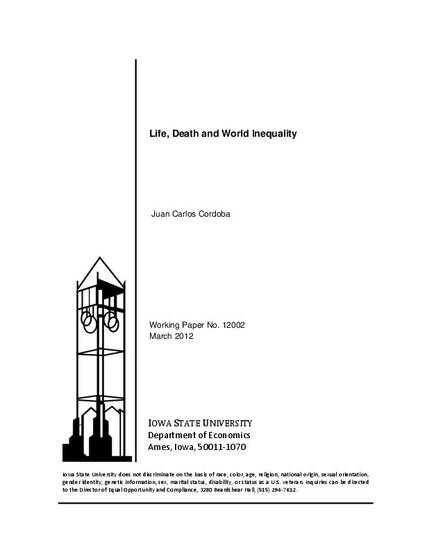
Life expectancy around the world has increased substantially since 1970. In contrast, consumption per capita has fallen in some countries, remained stagnant, or sharply increased in others. What are the welfare gains of the systematic increase in life expectancy around the world? How does a "full measure" of per capita income, one that adjusts for life expectancy, compare to standard measures of world inequality that only consider income? This paper documents how standard models used to answer these questions give rise to a number of predictions that are inconsistent with well-documented evidence, particularly on the value of statistical life. It then proposes a generalized model with non-separable preferences that exhibits a low elasticity of intertemporal substitution and a low degree of mortality aversion. The non-separable model reverts the counterfactual predictions of the standard model, and it also provides plausible measures of changes in welfare and inequality around the world.
Available at: http://works.bepress.com/juancarlos-cordoba/6/
